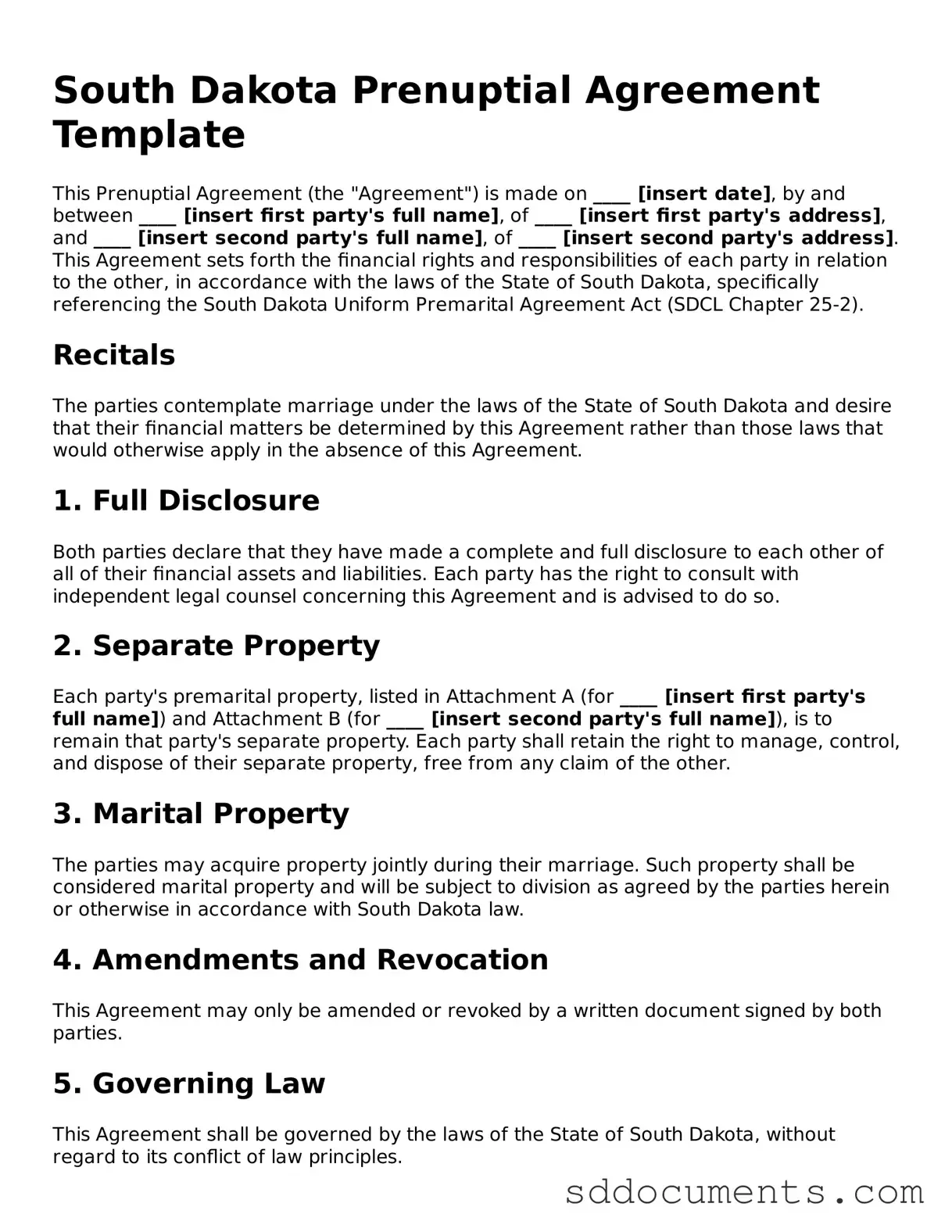Free Prenuptial Agreement Template for South Dakota
A South Dakota Prenuptial Agreement form is a legal document designed to outline the financial and personal rights of each partner in the event of a divorce or separation. This agreement helps couples clarify their intentions and protect their assets before entering into marriage. For those considering this important step, filling out the form can provide peace of mind; click the button below to get started.
Customize Document Online
